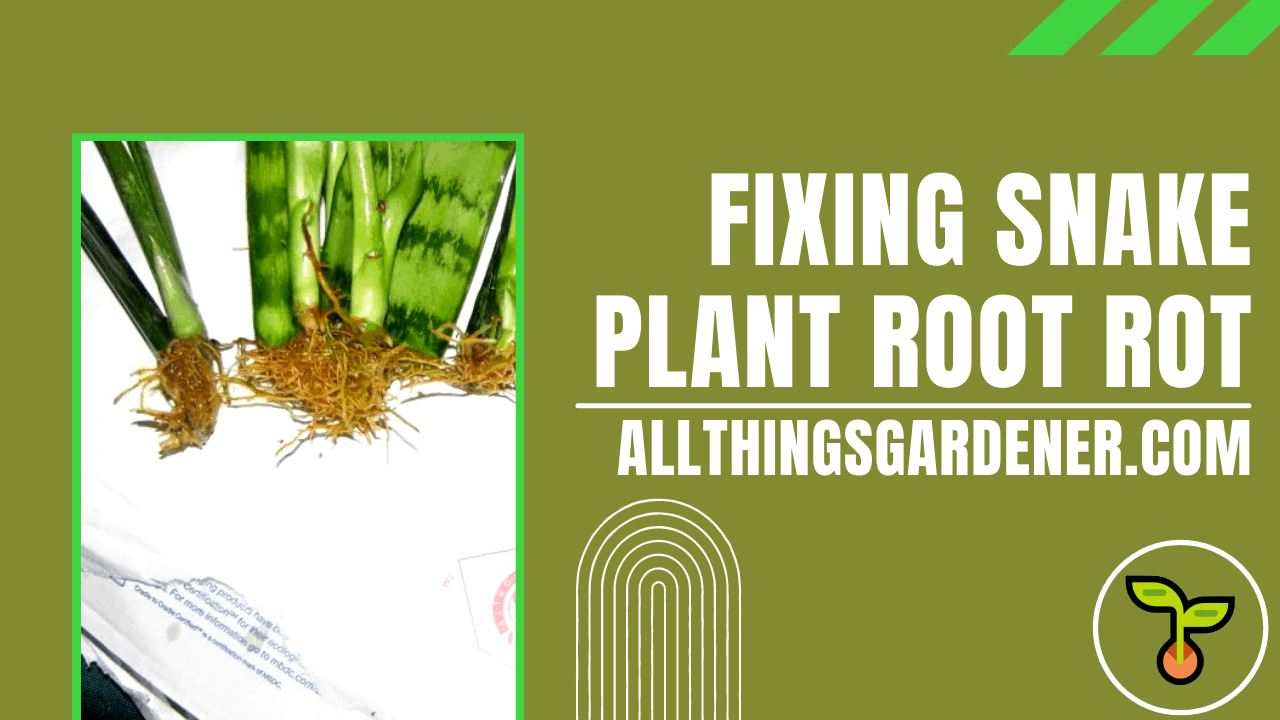Root Rot on Snake Plant
Growing plants is not always easy. Things like root rot can occur from time to time. In this article…
…I’ll discuss how to fix snake plant root rot and prevent it from happening again.
The old adage, prevention is better than treatment, is of course true…
…but if you find yourself visiting this page, your snake plant probably already has problems.
Repotting the infected snake plant in a new container with new soil is the best way to fix root rot. To avoid stagnant water, ensure that the soil in the pot and the pot has good drainage. Prior to repotting, trim off any soft, infected parts of the root system using a sterilized shears.
If you want more information about snake plant root rot, keep reading.
I’ll take you through the steps you can take to prevent it from happening as well as advice…
…on treating root rot once it occurs. Here we have story from Jake, about his experience facing root rot.
Let us hear Jake’s story.
I’ve been growing snake plants in my living room for three years now.
I have to admit that they aren’t the most attractive plants, but I love them…
…because they are so easy to care for and can survive just about anywhere.
They like it when I water them once a week and change their soil every two months or so.
Anyway, last week one of them got some root rot from sitting in a wet spot…
...when we had a storm that knocked out power for more than 24 hours.
So today after work, I went down to the local gardening store and bought some new potting mix…
…as well as some Miracle-Gro plant food pellets (because everyone knows that they make all your dreams come true).
After all of my cares focusing on my snake plant. now this plant is back to the healthy state like it used to be.
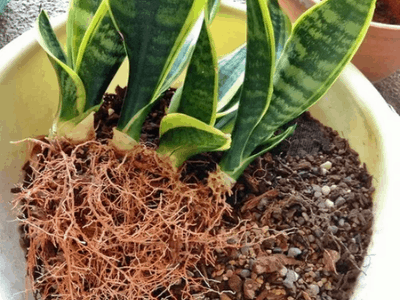
Because root rot begins below the soil where you can’t see it, it’s best to let your plant dry out completely between waterings.
Alexander Jones, has been an avid indoor and outdoor gardener for 10 years.
Snake Plant Showing Signs of Root Rot
Snake plant root rot is a problem like any other, so you should look out for the signs in order…
…for the snake plant to remain alive and healthy. The problem with root rot is that its symptoms…
…are often hidden beneath the soil and are therefore extremely dangerous for your plant.
A snake plant gets root rot where you cannot see it, so keep an eye on it if you want to keep an eye…
…on it and take care of it. In addition to the soil surrounding a plant, the root system is usually filled with water.
We will talk about preventing root rot in the future. Under the soil is a crucial space for root rot to occur.
Roots reaching above the surface of the soil can indicate root decay.
If you remove the plant from the pot regularly, you can check the roots.
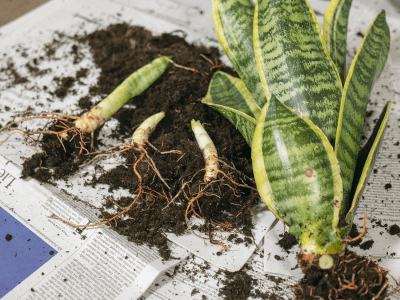
Wilting
Check your snake plant’s roots for symptoms of root rot if it begins to wilt without known reasons.
Another sign of this disease is wilting snake plants. Lack of water is one of many reasons why a snake plant can wilt.
In order to make sure that your snake plant gets the right amount of water under any circumstances…
…ensure that it doesn’t get overwatered.
Snake Plant Turning Yellow And Soft
It is another sign that there is root rot in the plant if your snake plants’ leaves turn yellow…
…or because they have been lacking water. Once you eliminate the initial option, it’s time to check the roots.
If both your snake plants are withered and have yellow leaves, it’s time to look for the third sign.
The snake plant roots start to rot because of fungal infection.
Due to a rotten root system, the snake plant becomes ineffective in supplying necessary nutrients.
Thus, overwatering or root rot make the snake plant yellow and soft.

Black Mushy Roots
Normal roots will not feel mushy in the fingers, but may be black in color when experiencing root rot.
One sign that the roots are rotten is that they may disconnect from the plant immediately…
…upon contact with your hands. Not all of the roots may be rotten. Only certain roots may show signs of damage.
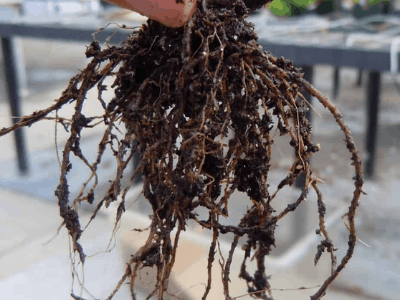
Causes of Snake Root Rot
This is where you have all been looking forward to! I will show you the causes of root rot…
…and explain what you can do to avoid it from occurring. You can keep your snake plants healthy and green…
…if you take steps to prevent root rot from happening in the first place.
This will not only reduce the risk of scarring but will also keep them out of the greenhouse.
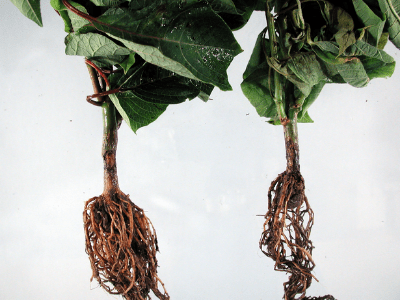
Overwatering
This is one of the most common causes of root rot in plants.
Watering your plants is something that every good plant owner will instinctively want to do…
…since it’s what keeps your plant alive, right?
Even so, too much water can prove fatal to a plant, so gardeners ought to take care when watering their crops.
Root rot in snake plants can be caused by overwatering when the water builds up in the soil around…
…the roots of the plant. The water can then saturate the outside layer of the roots with water.
It is this constant pressure that can cause the plant to suffer.
With so much water surrounding the roots, the plant won’t be able to take in oxygen from its roots.
Therefore, the plant will be reliant on the stomata on its leaves for oxygen transfer.
Because the roots are blocked by water, they cannot acquire enough oxygen to grow.
In addition, the roots will rot since they are the part of the plant that can least attain oxygen.
Poor Drainage
A snake plant needs to be in a place that has adequate drainage in order to survive.
Therefore, pots should have enough depth and surface area for the snake plant to grow.
Not only should your plant have enough space on the surface, but its roots must also have enough room in the soil below.
A plant in a solid-base pot may not be able to drain water from the bottom when this is necessary.
It means that the plant will begin to be starved of oxygen when the water collects inside the pot and starts to amass.
If possible, choose a pot with holes at the bottom that will drain excess water.
This may rule out your favorite pot, but it is worthwhile to make sure your snake plant stays healthy and alive!
Poor Drainage Capacity Soil
The droughty conditions are harder to handle for a snake plant because the water cannot reach the roots.
Poorly drained soil can make it harder for the plant to grow.
It is recommended that at least one third of your soil be compost or hummus.
Sand can also be used to facilitate drainage.
Pathogenic Infection
A second major cause of root rot, besides water, is fungal infection.
Other plants in the surroundings may carry this pathogenic infection.
It could happen if you use a pot that has pathogens from other plants or if you use infected soil.
Extra Large Pot
It may be detrimental to grow a snake plant in a large pot. While it may be natural to give each plant a large pot…
…to allow it to grow, a pot that is too big could cause root rot.
A pot that is 1-2 inches (3-6 cm) bigger than needed, will typically work well for your snake plant.
It’s because extra-large pots hold in excess moisture that causes root rot.
It will take years for the snake plants’ roots to spread evenly across the pot…
…thereby causing water to build up, which in turn causes rot to occur in the snake plants.
This can kill the snake plant and again emphasizes the importance of a properly sized pot for your snake plant.
______________________________________________________________________________________________________________________________
Sum Up
See having Snake plant is good choice for you to have! It’s cool, its famous, it’s easy to have and care!
What else do you need? In this pandemic time like this, is a good choice for you to have an new activity…
…and having snake plant is a good choice for you to have!
Conclusion
Last thing for sure. This plant need to be care carefully, remember plant need the “love” too.
Alright that’s all for today! Do you have any questions about all of this?
Or do you want to add some method for curing snake plant from root rot?
Let me know your recommendation from the comment below.
I hope you can now take care your snake carefully and grow it big!
Thanks for reading this article! Bye!

